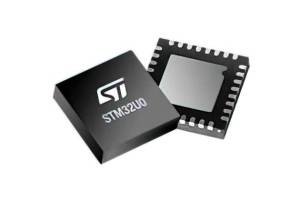Embedded microprocessors, integral components in various devices, serve the specific function of performing programmed tasks. Their design emphasizes solidity, efficiency, and reliability, making them ideal for applications with limited space and power resources. This article will clarify the essential role these microprocessors play and provide a sight of what lies ahead.
Consider embedded microprocessors as the smart minds exist within your favorites, family vehicles, and even certain educational apparatus. Their modest yet essential work ensures the seamless operation of these systems, underscoring their requisite nature.
Our journey will also cover the art of microprocessor selection, an exploration into the mechanics of embedded systems, an examination of their diverse typologies, an unveiling of their remarkable attributes, and an appreciation of the various advantages these little technological champions bring to our lives.
Discovering Embedded Microprocessors
Let's learn more about embedded microprocessors by looking at what makes them unique and how they're not like other computer chips.
What exactly are embedded microprocessors?
Embedded microprocessors are like tiny computer experts. They're small chips made to do specific jobs really well. They're in things like the engine of your car and your PS4. This is what makes them unique:
- Focused Skills: They're like superheroes with one superpower – they're really good at doing just one thing.
- Small Size: They're compact and don't take up much space, which is perfect for small devices.
- Efficient Energy Use: They're smart about using power, so they don't waste energy.
- Quick Decisions: Many of them make decisions in real-time, which means they're super fast.
How They're Different from Regular Computers
Regular computers, called general-purpose CPUs, can do lots of different tasks. But embedded microprocessors are like specialists. They're fantastic at one thing, and that's what makes them unique. They're the hidden heroes that power all sorts of devices and systems, making everything run smoothly.
Guiding the Way to Microprocessor Selection
Picking the right microchip for your project is a bit like drawing a map. We'll talk about the most important steps you should follow to choose the best one.
A. Defining Project Requirements and Constraints
Before embarking on the journey of selecting a microprocessor, it's vital to create a detailed project plan. Consider these key aspects:
- Functionality: Clearly outline the specific tasks and functions the microprocessor must perform for your project.
- Power Usage: Determine the maximum power consumption your project can afford to ensure it operates efficiently.
- Processing Speed: Evaluate how fast the microprocessor needs to perform tasks and processes.
- Compatibility: Ensure the microprocessor works seamlessly with other components, peripherals, and software in your project.
- Special Features: Identify any unique features, like sensor compatibility or ruggedness, required for your project.
- Budget: Establish a budget that considers the cost of the microprocessor and other project components.
B. How to Begin the Microprocessor Selection Process
With a clear plan, it's time to choose the right computer. To make a good choice, follow these steps:
- Market Research: Explore the microprocessors available in the market, considering factors like brand reputation and support.
- Technical Specifications: Review the technical details of microprocessors, including processing power, architecture, power usage, and compatibility with your project's requirements.
- Evaluation: Shortlist a few microprocessors that meet your project's needs, comparing their features, pricing, and support.
- Prototyping: If possible, create a prototype or test setup to assess the selected microprocessors' real-world performance.
- Consultation: Seek advice from experts or colleagues experienced in similar projects to gain valuable insights.
- Decision: Based on your research, evaluations, and budget considerations, choose the microprocessor that aligns best with your project's requirements.
By following these steps and defining your project's needs clearly, you can navigate the microprocessor selection process effectively, ensuring the success of your embedded design project.
How to Choose the Right Microprocessor for Your Embedded Design
It's a pivotal decision in the world of embedded systems, and it merits careful evaluation. In this section, we will delve into the significance of making the right microprocessor choice and discuss the essential factors to plan during the selection process.
A. The Significance of Microprocessor Selection
The microprocessor along with its associated oscillator, serves as the central part of your embedded system, much like an engine does for a vehicle. It determines how well your system will perform its designated tasks. Getting the right microchip is like getting the right piece of a puzzle. It makes sure that everything works well and fits together perfectly. You must make this choice.
B. What to Think About When Choosing a Microprocessor
When it's time to choose the right microprocessor for your project, remember a few important things. These are helpful signs to make a good choice:
- Power Efficiency - Saving Energy: Think about how much power the microprocessor uses. You want one that uses just the right amount – not too much, or it might get too hot and cost more to run.
- Speeding Up Your Project: The microprocessor's speed is like a fast or slow button for your project. It decides how quickly your project can finish tasks. You want it to be just the right speed for what you're doing.
- Getting Along with Others: Make sure the microprocessor works well with all the other parts, like software and switches. It's like making sure that all the parts in a band work well together. Your project might not work right, and it might take longer to finish if they don't.
- Cost Considerations: Budget limits are an important thing to think about. It's like making sure that all the parts in a band work well together. Your project might not work right, and it might take longer to finish if they don't.
Microprocessors also have extra features, such as protection, built-in tools, and unique ways to talk to other devices. Make sure that these things are what your project needs. You will be better able to choose the integrated circuit that works best for your embedded design project if you carefully think about these things.
Exploring Various Types of Embedded Microprocessors
Learn about the different kinds of embedded microprocessors, like microcontrollers UC3843DTR, DSPs, and FPGAs, and how to pick the right one for your project.
A. Overview of Common Types
Embedded microprocessors come in various flavors, each with its unique capabilities:
Type | Description | Common Applications |
Microcontrollers (MCUs) | Compact chips for control tasks in appliances. | Home appliances, remotes, and embedded systems. |
Digital Signal Processors (DSPs) | Specialized in signal processing in devices. | Smartphones, audio, image, and video processing. |
Field-Programmable Gate Arrays (FPGAs) | Adaptable chips for versatile applications. | Robotics, telecom, industrial automation, prototyping. |
B. Choosing the Right Type
Picking the right type of embedded microprocessor depends on your project's specific needs:
- For simple control tasks, like turning devices on and off, microcontrollers are a good fit.
- If your project involves signal processing, such as audio or image manipulation, DSPs are the way to go.
- When your project requires flexibility and custom functions, FPGAs offer the adaptability you need.
By considering your project's requirements, you can select the ideal embedded microprocessor type to ensure successful project execution.
Unveiling the Versatility of Embedded Microprocessor Features
Let's delve into the distinct qualities that transform embedded microprocessors into dynamic tools for a wide array of applications. Discover why selecting the perfect feature set is essential to success.
- The Design of Adaptability
Embedded microprocessors possess a set of remarkable features that allow them to blend into various applications seamlessly:
- Efficient Energy Utilization: Their low power consumption ensures prolonged operation without draining energy reserves, making them eco-friendly and cost-effective.
- Real-Time Responsiveness: Many embedded microprocessors operate with lightning speed, ideal for tasks where split-second decisions are paramount.
- Compact Craftsmanship: Their small physical footprint is a perfect fit for devices with limited space, enabling them to nestle snugly within a multitude of products.
- Versatile Connectivity: Embedded microprocessors effortlessly link up with sensors, actuators, and other components, enhancing their ability to communicate with and control the physical world.
B. The Variety of Significance
Selecting a microprocessor with the right features is akin to forming a masterpiece. It holds immense importance for several compelling reasons:
- Efficiency Maven: The right features translate to efficiency, ensuring that your device operates optimally, conserving power and resources.
- Performance Virtuoso: Tailored features propel your project to peak performance, enabling it to shine in its intended role.
- Compatibility Alchemist: Aligning features with your project's unique requirements guarantees harmony among all components, negating compatibility hiccups.
- Cost-Effective Sorcery: The art of feature selection prevents overblown costs by focusing resources on essential capabilities while preserving the desired functionality.
Benefits of Embedded Microprocessors
Benefits of Embedded Microprocessors & Comparison with Full-Fledged Computer Systems
Advantages | Description |
1. Low Power Consumption | Embedded microprocessors consume minimal power, ideal for battery-operated and energy-efficient devices. |
2. Small Size | Designed to be compact, they fit well in space-limited devices. |
3. Real-time Processing | Capable of real-time task execution, ensuring quick and reliable responses to inputs or events. |
4. Low Cost | Cost-effective due to fewer hardware and software requirements, reducing maintenance and operational expenses. |
5. High Reliability | Known for long-term operation without failure and reduced susceptibility to viruses. |
Wrapping Up
To sum up, embedded microprocessors are essential for any electronic project or system. You need to select and set up the right microprocessor to get the best performance, functionality, and dependability. This guide to understanding embedded microprocessors helps you to consider the important factors and make smart choices for building effective embedded systems for various purposes.





